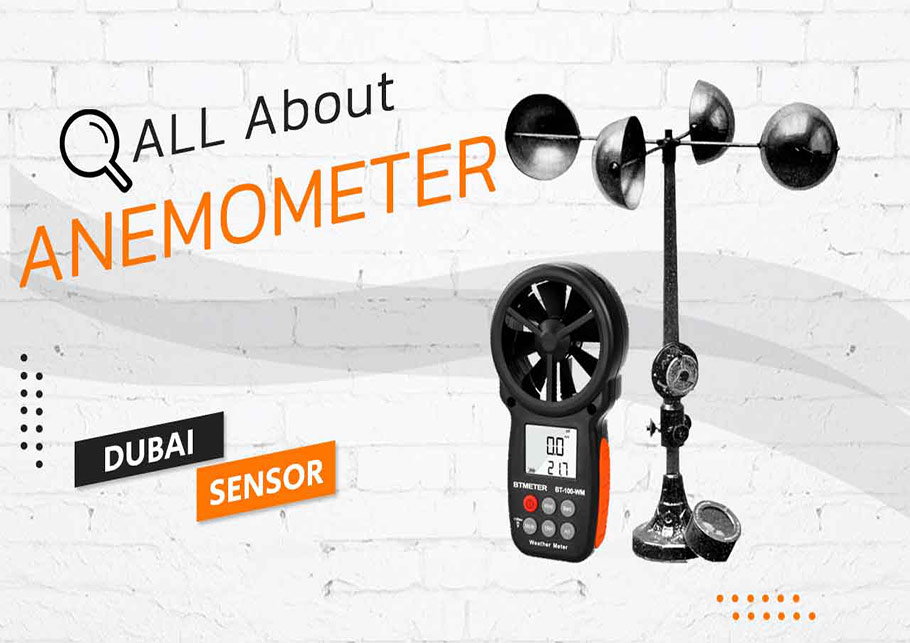Specialist Tips for Adjusting Your Anemometer for Ideal Performance
Specialist Tips for Adjusting Your Anemometer for Ideal Performance
Blog Article
Anemometers Introduced: Understanding Their Significance in Ecological Tracking and Precaution
The role of anemometers in ecological tracking and safety and security procedures is frequently taken too lightly, yet their significance is undeniable. From weather forecasting to aviation safety, anemometers play a crucial role in giving accurate data that informs decision-making procedures and enhances total safety.
History of Anemometers
The evolution of anemometers can be mapped back to the old worlds where basic wind measuring devices were very first made use of. These early wind measurement tools laid the structure for the development of a lot more innovative anemometers in time. One of the earliest known anemometers was the hemispherical cup anemometer invented by Leon Battista Alberti in the 15th century. This style was composed of four hemispherical cups that gathered wind power, giving a measurement of its intensity based upon the rate of rotation.
In the 18th century, the prominent researcher John Thomas Romney Robinson presented the Robinson anemometer, which included 4 hemispherical cups mounted on straight arms that prolonged from a central axis. This layout became a criterion in atmospheric measurements because of its accuracy and integrity. Throughout the years, innovations in technology led to the development of more contemporary anemometers, consisting of ultrasonic anemometers and laser Doppler anemometers, supplying raised accuracy and performance in gauging wind rate and instructions. The history of anemometers showcases an amazing journey of technology and progression in the field of meteorology.
Sorts Of Anemometers
Throughout the area of meteorology, various types of anemometers have actually been developed to accurately gauge wind rate and direction. Sonic anemometers utilize ultrasonic signals to determine wind rate and direction precisely. Hot-wire anemometers run based on the principle that the cooling effect of wind on a warmed wire is symmetrical to the wind speed.
Applications in Weather Forecasting
Having actually reviewed the various kinds of anemometers utilized in meteorology for determining wind rate and direction, it is important to discover their sensible applications in the area. Anemometers play an essential duty in weather forecasting by giving real-time and accurate data on wind conditions (anemometer). Meteorologists use anemometers to keep an eye on wind speed and instructions to forecast weather patterns, problem cautions for extreme weather occasions like storms, storms, and tornadoes, and analyze climatic problems for aeronautics safety and security
In weather forecasting, anemometers assist in understanding regional and regional wind patterns, which are vital for predicting weather condition modifications and establishing weather trends. These gadgets are also made use of in research to examine microclimates, urban heat islands, and link air pollution diffusion. In addition, anemometers are used in farming to enhance plant monitoring techniques, such as watering and chemical application, based on wind problems.
Relevance in Air Travel Safety
An integral aspect of guaranteeing aviation safety and security lies in the precise monitoring of wind problems using anemometers. Anemometers play a vital duty in aeronautics by offering real-time data on wind rate and direction, assisting pilots in making informed choices during landing, flight, and liftoff. Unpredictable and strong winds can considerably impact airplane operations, making it vital for air travel authorities to count on precise wind dimensions to ensure the safety and security of travelers and staff.

In the dynamic setting of air travel, where even minor adjustments in wind rate and direction can have profound impacts, anemometers stand as vital devices for advertising risk-free and safe and secure air traveling.
Function in Environmental Research Study
Anemometers play a critical role in ecological research by providing vital data on wind speed and instructions. By accurately determining wind attributes, anemometers assist researchers examine the movement of toxins in the air, analyze the influence of industrial emissions, and predict the spread of pollutants in the setting.


Final Thought
Finally, anemometers have actually played a critical role in environmental monitoring and safety actions. With a rich history and various kinds offered, these tools have been commonly made use of in weather forecasting, aviation safety and security, and ecological research study. Comprehending the value of anemometers is important for accurately measuring wind rate and direction, which is essential for anticipating weather patterns, ensuring risk-free aviation procedures, and carrying out environmental researches - anemometer. Their payments to these areas can not be ignored.
One of the earliest known anemometers was the hemispherical mug anemometer developed by Leon Battista Alberti in the 15th century. Over the years, developments in technology led to the development of more contemporary anemometers, consisting of ultrasonic anemometers and laser Doppler anemometers, providing enhanced precision and performance in determining wind speed and direction. Hot-wire anemometers run based on the concept that the cooling impact of wind on a warmed cable is symmetrical to the wind speed. Meteorologists use anemometers to keep an eye on wind rate and direction to forecast weather condition patterns, problem cautions for serious climate events like hurricanes, tornados, and twisters, and examine atmospheric conditions for aeronautics safety and security.
Recognizing the importance of anemometers is crucial for accurately gauging wind rate and instructions, which is vital for predicting climate patterns, ensuring safe air travel procedures, and carrying out Full Article environmental researches. (anemometer)
Report this page